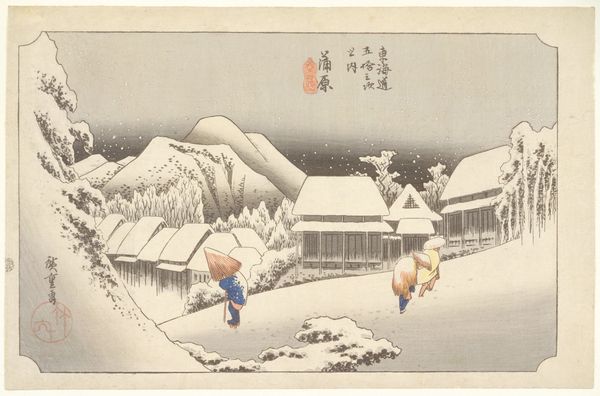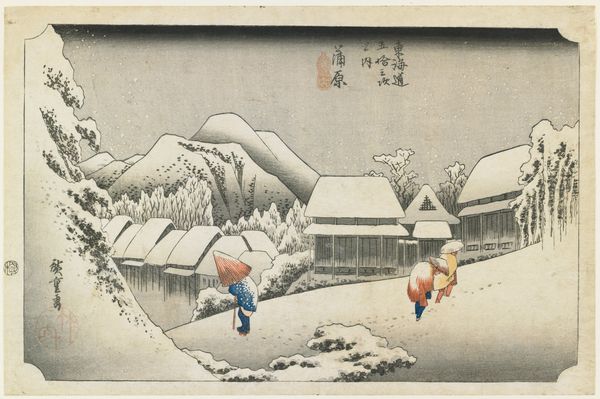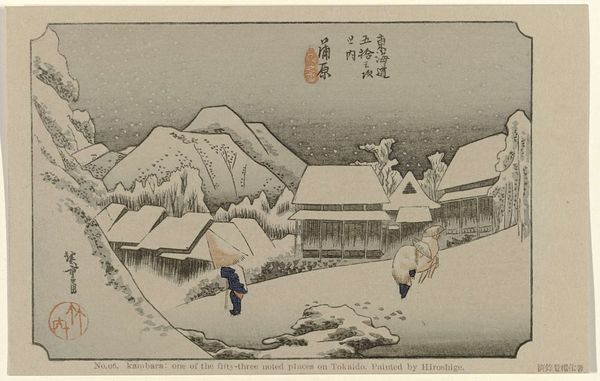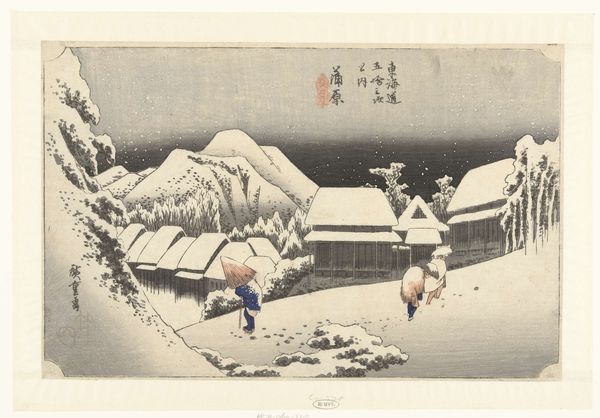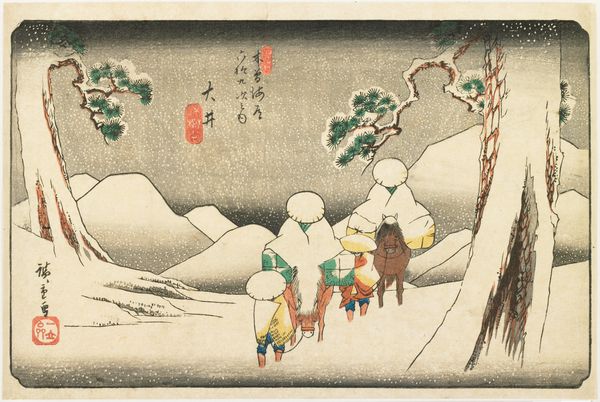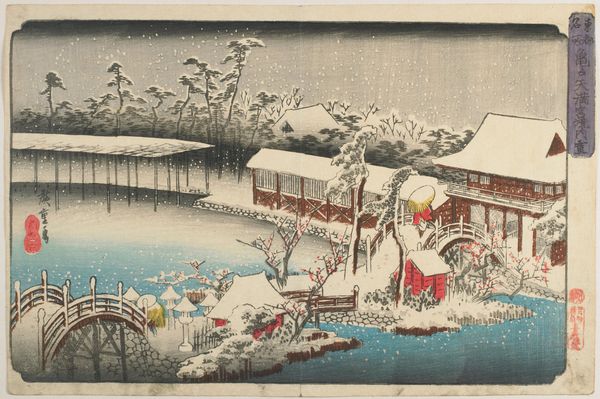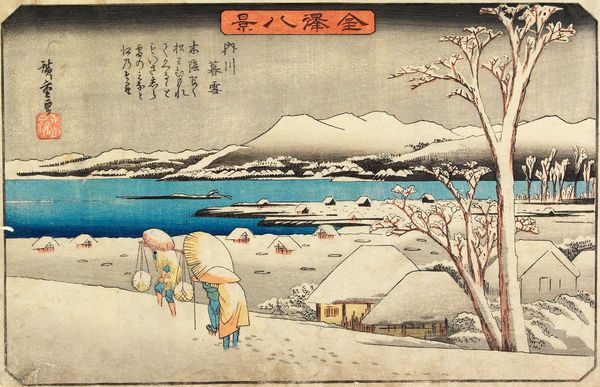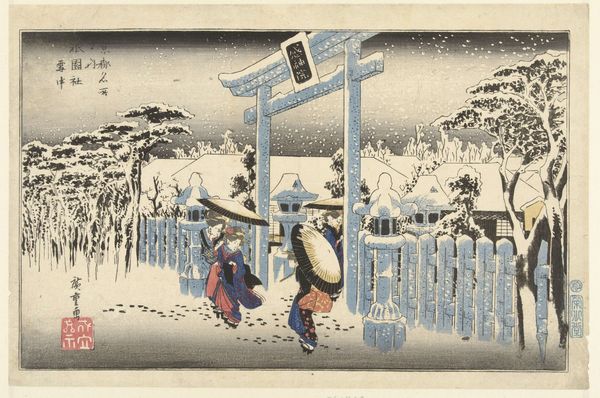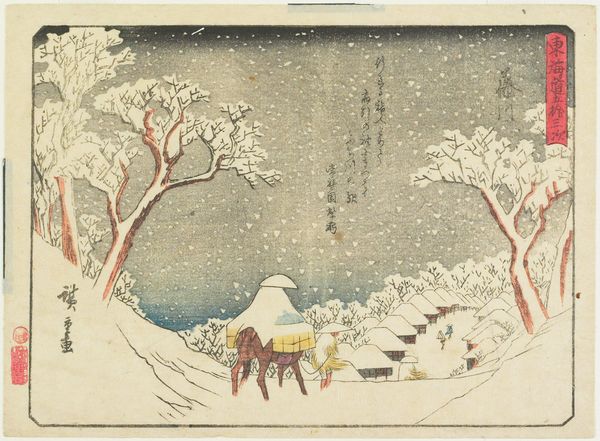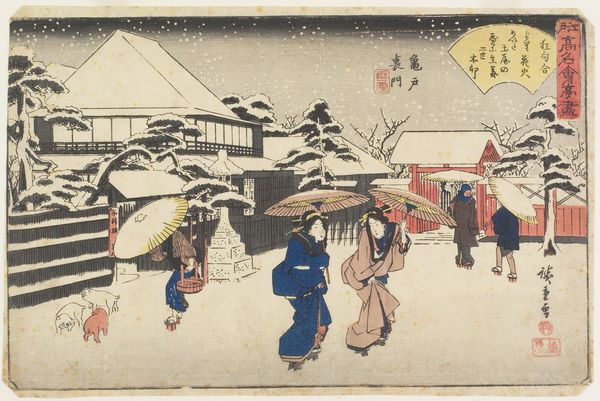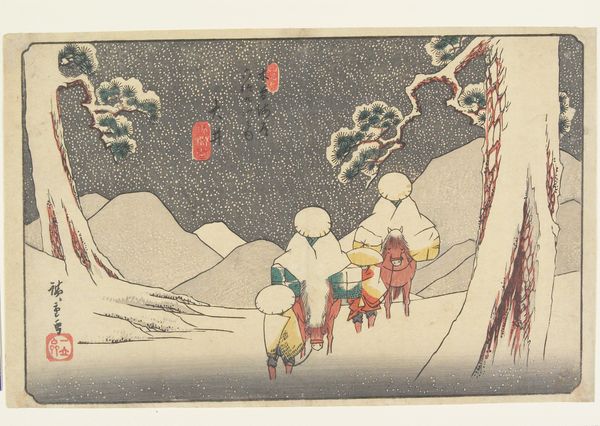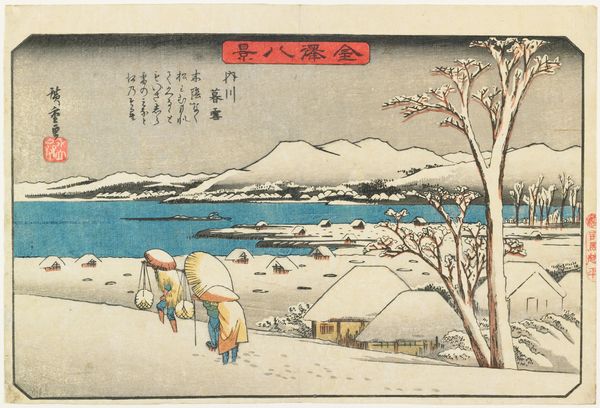
Kanbara: Night Snow (Kanbara, yoru no yuki), from the series Fifty-three Stations of the TÅkaidÅ Road (TÅkaidÅ gojÅ«san tsugi no uchi), also known as the First TÅkaidÅ or Great TÅkaidÅ c. 1833 - 1834
0:00
0:00
Dimensions: horizontal Åban: H. 24.6 cm x W. 36.5 cm (9 11/16 x 14 3/8 in.)
Copyright: CC0 1.0
Curator: This is Utagawa Hiroshige's "Kanbara: Night Snow," from his "Fifty-three Stations of the TÅkaidÅ Road" series, currently held at the Harvard Art Museums. The print captures a winter scene along the vital TÅkaidÅ route. Editor: It's so evocative! The descending snow creates this hushed, almost melancholic atmosphere, and the soft colors add to the feeling of quiet isolation. Curator: Absolutely. Hiroshige masterfully uses the motif of snow, here as a socio-political factor impacting travel and trade. Consider how this scene reflects the realities of life outside urban centers. Editor: And snow is so often used symbolically. The purity, the blanket covering… it suggests a kind of cleansing or a pause in the everyday. I notice the travelers bent against the storm, perhaps metaphors for resilience. Curator: Precisely. Hiroshige's work demonstrates how landscapes are never just scenery. They're reflections of human experience, molded by cultural and material conditions. Editor: Thinking about it, the darkness and snow might also represent the challenges of a journey—the need for perseverance, and the hope for safe arrival. This piece really lingers in the mind.
Comments
No comments
Be the first to comment and join the conversation on the ultimate creative platform.
